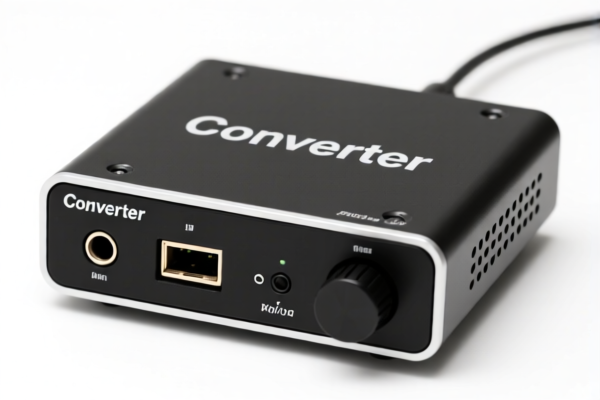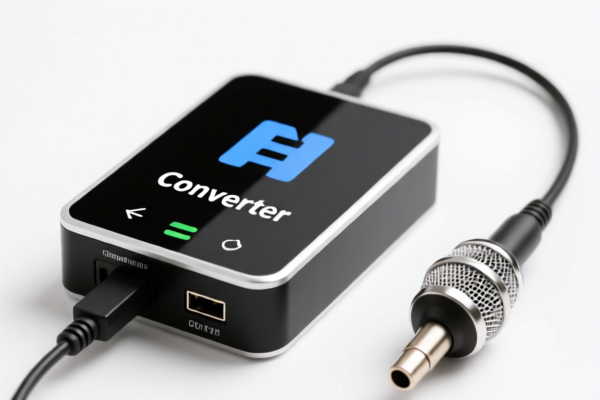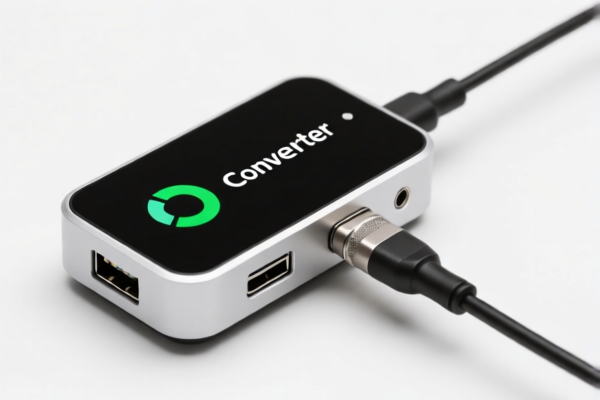| HS Code | Official Doc | Tariff Rate | Origin | Destination | Effective Date |
|---|---|---|---|---|---|
| 8522100000 | Doc | 58.9% | CN | US | 2025-05-12 |
| 8522906500 | Doc | 55.0% | CN | US | 2025-05-12 |
| 8519814150 | Doc | 30.0% | CN | US | 2025-05-12 |
| 8519893000 | Doc | 37.5% | CN | US | 2025-05-12 |
| 8543708000 | Doc | 55.0% | CN | US | 2025-05-12 |
| 8543906800 | Doc | 55.0% | CN | US | 2025-05-12 |




Video Converter
A video converter is a software application or hardware device used to change the format of a digital video file. This process allows for compatibility with various devices, platforms, and editing software, as well as reducing file sizes and optimizing video for specific uses.
Material & Technology
Video converters operate through encoding and decoding video and audio codecs.
- Codecs (Coder-Decoders): These algorithms compress and decompress video data. Common codecs include H.264, H.265 (HEVC), VP9, MPEG-4, AV1, and older standards like DivX and XviD. The converter essentially reads the video data in its original codec, decodes it, and then encodes it into a new codec specified by the user.
- Software Converters: These utilize the computer's processing power to perform the conversion. They are the most common type, available across operating systems (Windows, macOS, Linux) and often support a wide range of formats.
- Hardware Converters: Dedicated devices with specialized processors optimized for video encoding/decoding. These are generally faster than software solutions, particularly for demanding tasks, but are less flexible in terms of supported formats and require an additional purchase.
- Online Converters: Web-based tools that perform conversions in the cloud. These are convenient for occasional use but typically have file size limitations and potential privacy concerns.
Purpose
The primary purposes of video conversion include:
- Compatibility: Converting videos to formats supported by specific devices (smartphones, tablets, TVs, game consoles) or platforms (YouTube, Vimeo, social media).
- File Size Reduction: Compressing videos to smaller sizes for easier storage, faster uploading/downloading, and reduced bandwidth consumption.
- Editing: Converting videos to formats compatible with video editing software.
- Archiving: Converting older video formats to more modern, widely supported standards to ensure long-term preservation.
- Optimization: Adjusting video parameters (resolution, bitrate, frame rate) to optimize for specific playback conditions or streaming services.
Function
A video converter typically performs the following functions:
- Input: Accepts video files from various sources (hard drive, optical disc, URL).
- Format Selection: Allows the user to choose the desired output format (e.g., MP4, AVI, MOV, WMV, FLV, MKV).
- Codec Selection: Enables the user to specify the codec used for encoding the video and audio streams.
- Resolution Adjustment: Allows the user to change the video's resolution (e.g., 1080p, 720p, 480p).
- Bitrate Control: Allows the user to adjust the bitrate, which affects the video's quality and file size.
- Frame Rate Adjustment: Allows the user to modify the frame rate of the video.
- Audio Settings: Allows the user to configure audio parameters (codec, bitrate, channels).
- Editing Features (optional): Some converters offer basic editing features such as trimming, cropping, merging, and adding subtitles.
- Output: Saves the converted video file to a specified location.
Usage Scenarios
- Smartphone/Tablet Playback: Converting videos to MP4 for compatibility with mobile devices.
- YouTube/Vimeo Upload: Converting videos to formats optimized for streaming platforms.
- Video Editing: Converting videos to formats compatible with video editing software like Adobe Premiere Pro or Final Cut Pro.
- Archiving Old Videos: Converting VHS tapes or older digital video formats to modern standards like MP4.
- Reducing File Size for Email/Sharing: Compressing videos for easier sharing via email or social media.
- Playing Videos on Specific Devices: Converting videos to formats supported by smart TVs, game consoles, or other media players.
Common Types
- HandBrake: A free and open-source video transcoder, popular for its versatility and extensive format support.
- VLC Media Player: A widely used media player that also includes basic video conversion capabilities.
- Any Video Converter: A versatile converter with support for a wide range of formats and devices.
- Freemake Video Converter: A user-friendly converter with a simple interface.
- Wondershare UniConverter: A comprehensive converter with advanced features such as DVD ripping and video editing.
- CloudConvert: An online converter that supports a wide range of formats and offers advanced options.
- Online Video Converter (various providers): Numerous web-based converters with varying features and limitations.
Based on the provided information, a video converter can be classified under several HS codes, depending on its specific function and components. Here's a breakdown of potential classifications:
- 8519814150: Sound recording or reproducing apparatus; other apparatus; using magnetic, optical or semiconductor media; other other. This code applies to apparatus utilizing magnetic, optical, or semiconductor media, which could include video converters that rely on these technologies for processing or storage. The total tax rate is 30.0%.
- 8519893000: Sound recording or reproducing apparatus; other apparatus; other; other. This is a broader category for other sound recording or reproducing apparatus, potentially encompassing video converters not specifically using magnetic, optical, or semiconductor media. The total tax rate is 37.5%.
- 8543708000: Electrical machines and apparatus, having individual functions, not specified or included elsewhere in this chapter; parts thereof; other machines and apparatus; other; microwave amplifiers. If the video converter utilizes microwave amplification technology in its operation, this code may be applicable. The total tax rate is 55.0%.
It's important to note that the precise classification depends on the converter's technical specifications and intended use.
Regarding HS code 8519814150 and 8519893000, the apparatus utilizes magnetic, optical or semiconductor media, or other sound recording or reproducing apparatus.
Customer Reviews
No reviews yet.